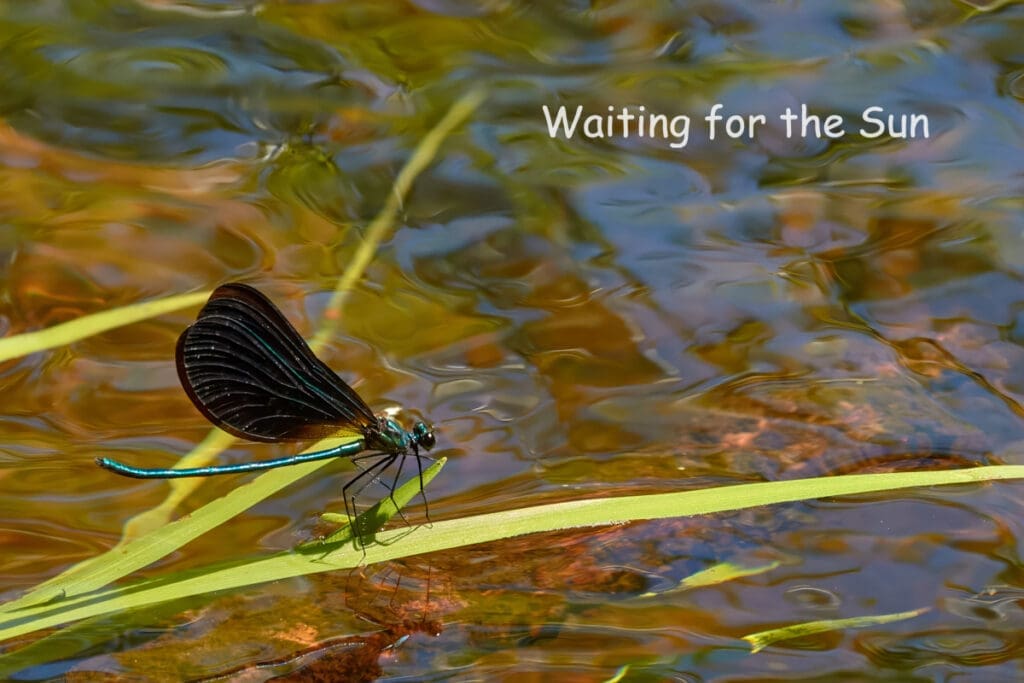Loon Update and Damselfly Behavior
2023, No. 8 — August 19

Vesper Bluets on a Lilly Pad in Turtle Cove
Lady Paisley
When Paisley was tagged recently, a blood sample and leg measurements were taken that reveal Paisley is a female!
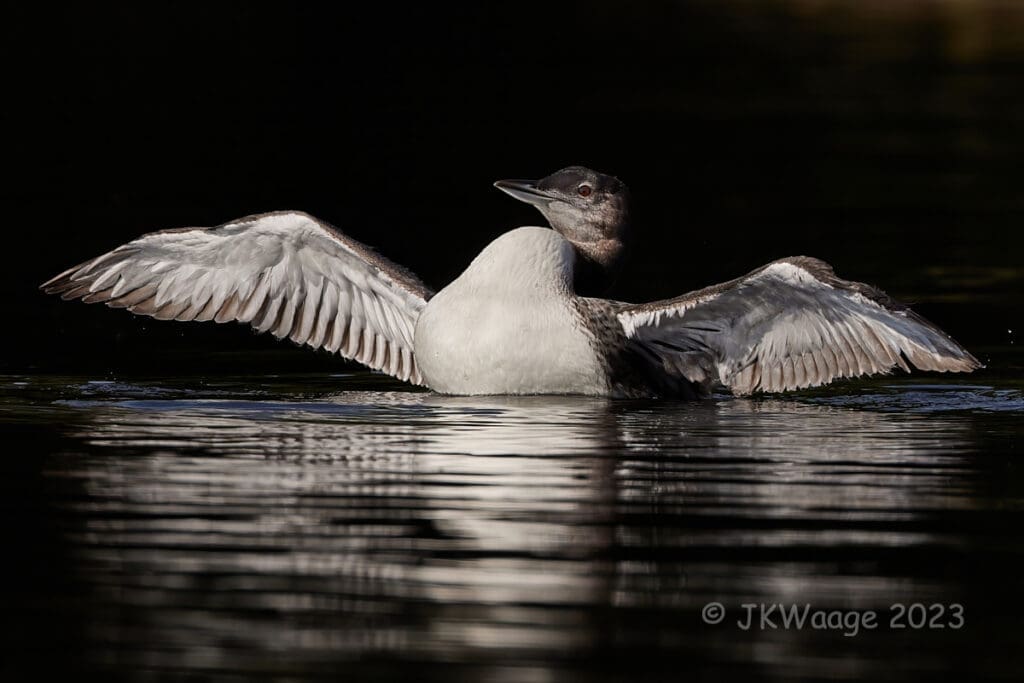
Paisley, now 2 months old, continues to grow and mature.
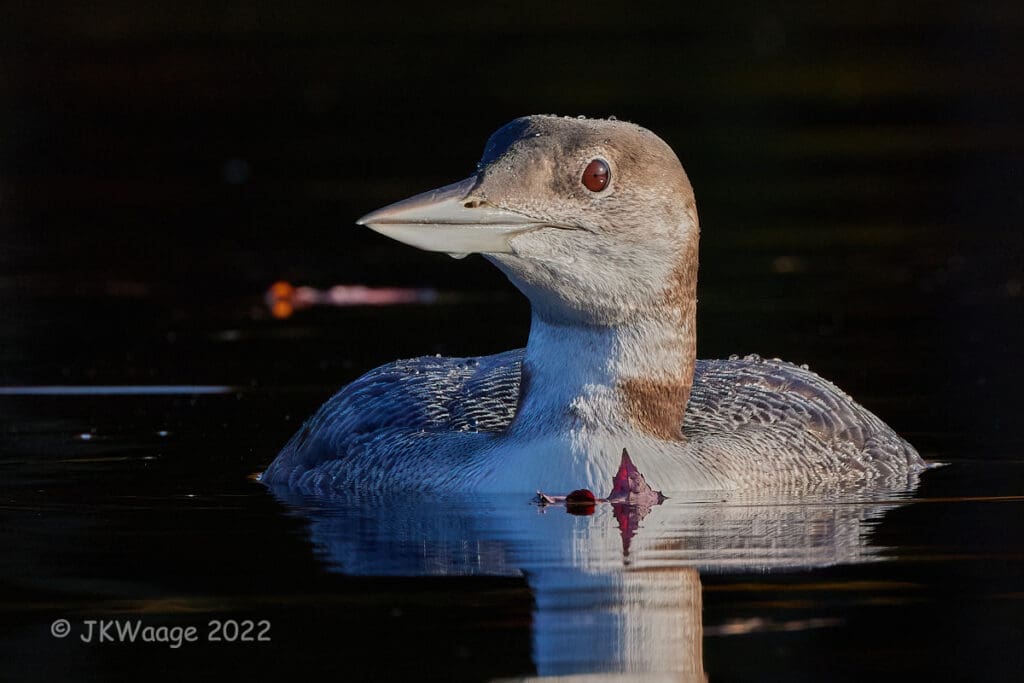
It is likely that Prosper (above) was the loon chick rescued by LPC from Pleasant Lake last December. That chick was banded and we now know it is a male. We are looking forward to the adventures of Lady Paisley and Lord Prosper should they be found in the area once they mature.

Paisley has just a little bit of her “chick plumage” left.
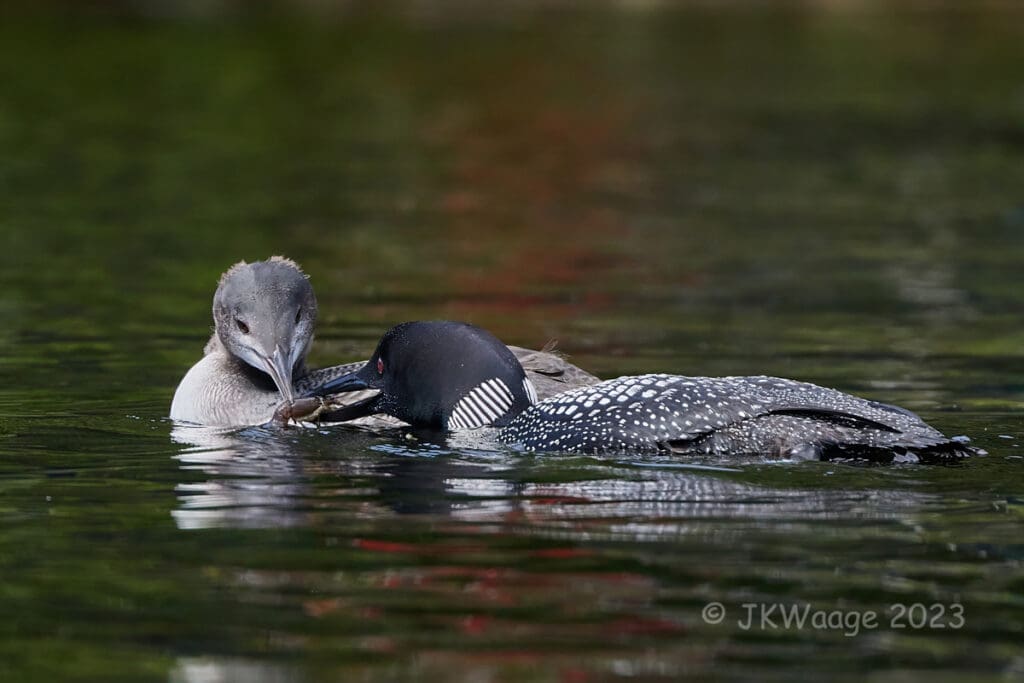
She is still being fed by her dutiful parents.

Oh Mom! Not another one of those scratchy crayfish!
A Bit of Damselfly Biology
The Odonata (Dragonflies and Damselflies) have been around for a very long time – about 300 Million Years. When they first appeared, all of the land masses on Earth were collected in one big lump (Pangea) and early amphibians and a few reptiles were the only vertebrates on land. Dinosaur ancestors were just beginning to evolve. A mere 233 million years later feathered dinosaurs – birds – joined Odonates and other insects already in command of the air.
Jon did research on Odonata for most of his career. Let’s use some local species to learn more about the biology of these ancient insects. [What follows incudes some details on their reproductive behavior which may not be suitable for all ages.]
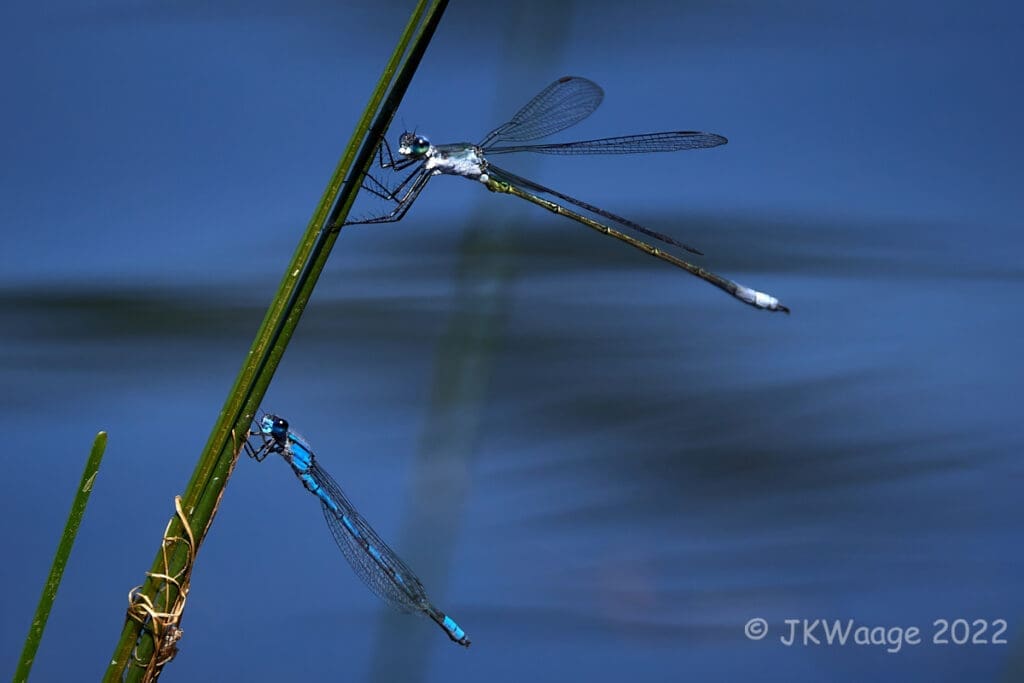
Damselflies differ from Dragonflies in having their wings folded over their long thin abdomens while perched. Most resting damselflies look like the bottom one above (a Bluet). There are several groups of Damselflies that spread their wings a bit while at rest like the top Damselfly above. It belongs to the Spreadwing group.

A recently emerged Damselfly perched behind its shed larval skin.
What is remarkable about these insects is that they spend most of their lives below water (1-2 years) as voracious predators catching their prey with an extensible lower jaw and breathing with a set of gills on their abdomen. As adults these aerial predators live a week or so (some tropical species, several months) mating and laying eggs.

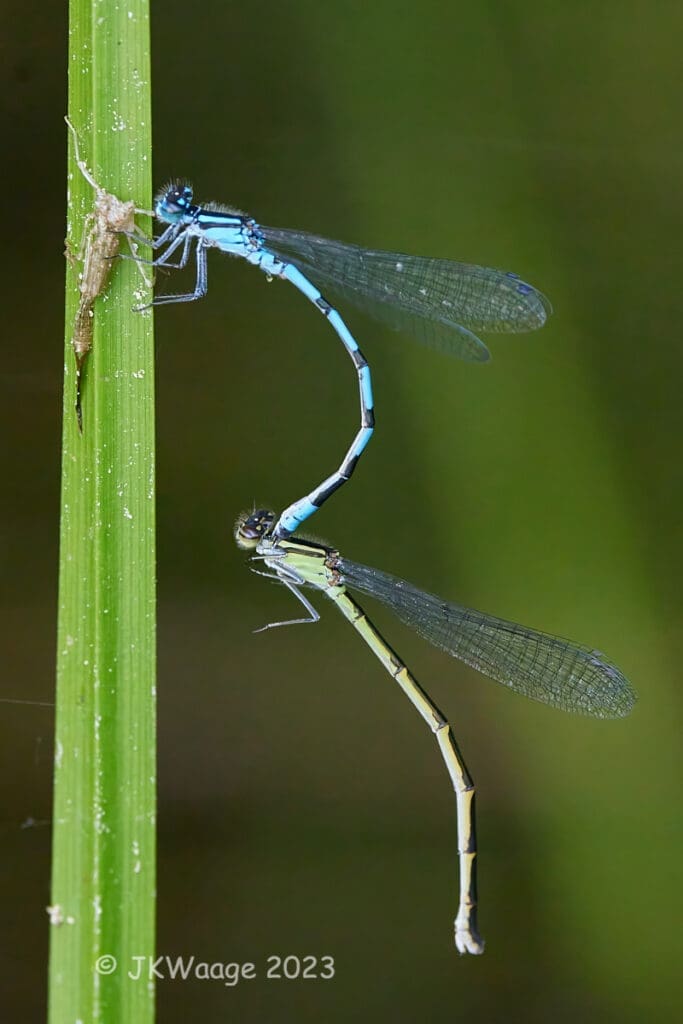
Damselfly (and Dragonfly) mating turns out to be fascinatingly complex. You are probably familiar with the two “poses” above. On the left is the typical “heart-shaped” position of a mating pair – the male is blue. The right pair is another common sight. The male is holding the female using pincers at the end of his abdomen. This position is referred to as “tandem”.
But there is a problem here. Like all insects, the ovaries or testis occupy a lot of the abdomen and the copulatory structures are at the end of the abdomen. So how does a male Damselfly hold the female with the end of his abdomen and mate with her at the same time?
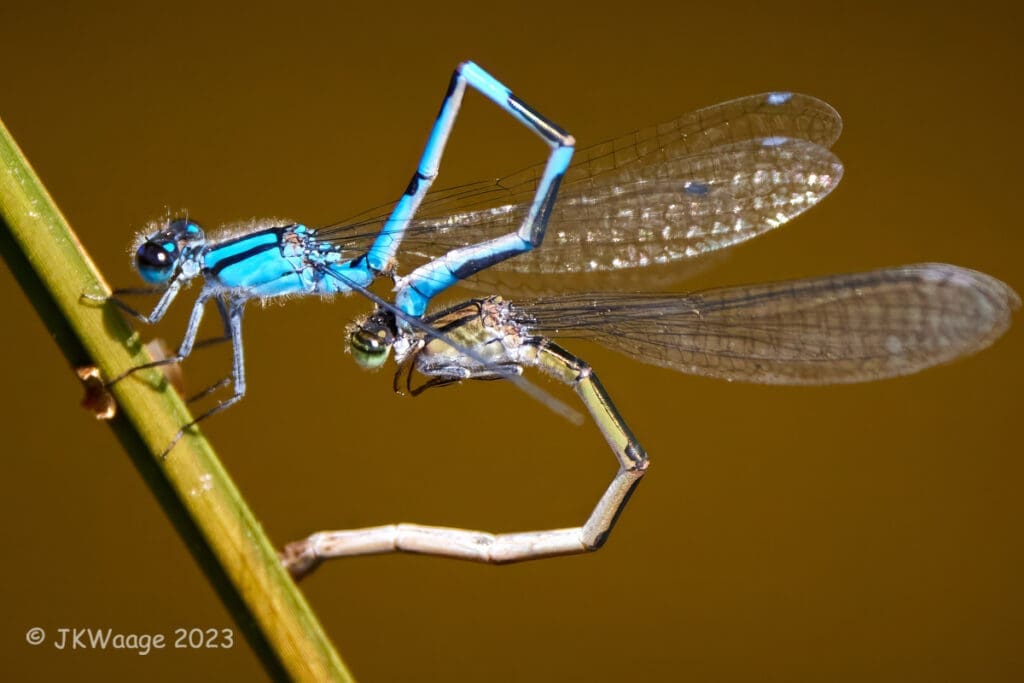
We still don’t know how it evolved, but male Odonates are unique in having a second set of copulatory structures as part of their second abdominal segment. In order to mate they first have to transfer sperm from the end of their abdomen to a sack on the second segment (the male above is just starting to do that).
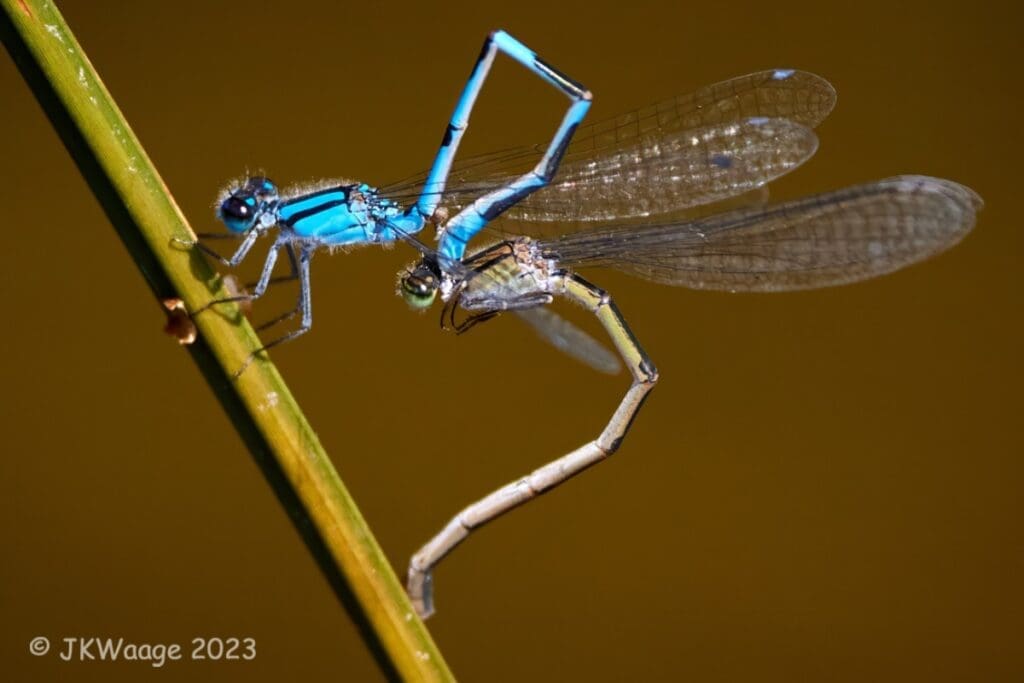
Once that sack is full – you can see it above if you look closely – the pair can now mate. This requires the female to bring her abdomen up in order to join together.

If that was all a bit odd, what happens next is even more so. First you need to know that females store the sperm they receive from a male and use it very efficiently to fertilize dozens if not hundreds of eggs, after a mating or over their lifetime. Each egg is fertilized with stored sperm as it is being laid.
Jon discovered that during mating the male will first remove some or all of the sperm of any previous male from that storage place and then replace it with his own. Given that eggs are fertilized as they are being laid, how does a male assure his sperm are not replaced by another male’s before that happens?
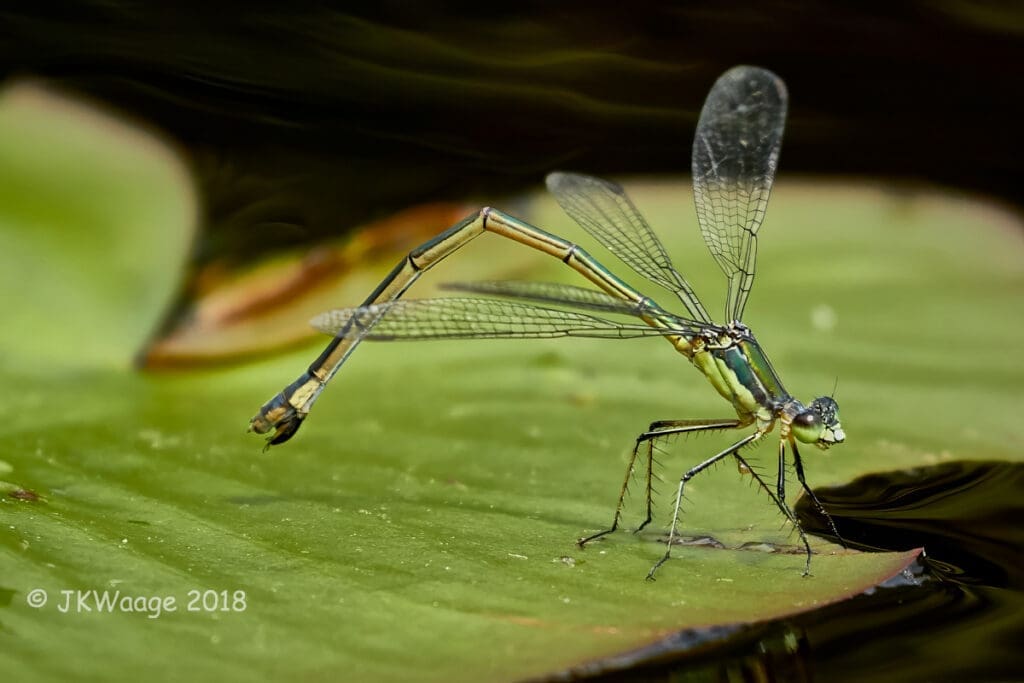
Let’s first look at how Damselfly females lay their eggs. Females have an ovipositor (curved black object at the end of the abdomen above) that allows them to punch a hole and insert an egg into plant tissues. All Damselflies deposit fertilized eggs into plant tissues.

Like most Damselflies, Bluet pairs remain in tandem during egg laying. The old explanation for this was a male protecting his female. But from what? They cannot fly very well in tandem and both the male and female are in the most vulnerable place they can be. At the water surface they risk predation from birds, frogs, fish and spiders.
Given the likelihood of sperm removal it makes sense that males stay in tandem while the female lays eggs to assure his sperm fertilize the eggs.
In Bluets and most other Damselflies, males wait at the water near places where females come to find a mate and lay eggs. Females only come to the water when they have mature eggs to lay and spend the rest of their time away from the water maturing more eggs.
Males are competing for both mating opportunities and the fertilizations that may result from them. It is clear that females are not passive entities in this competition. Their main interest is in finding the best places to lay their eggs and doing that with the least time and risk exposed to males and predators.
Alternatives to Tandem Egg Laying

Eastern Forktails (male above) take a different approach. Males have the same ‘find and pounce’ strategy in obtaining matings, but females do not always say yes. A simple curling downward of her abdomen says no. Nor do females remain in tandem after mating. Instead they lay eggs alone, often secretively and over many days, using stored sperm from previous mating. Below a female is inserting eggs into an aquatic plant stem.
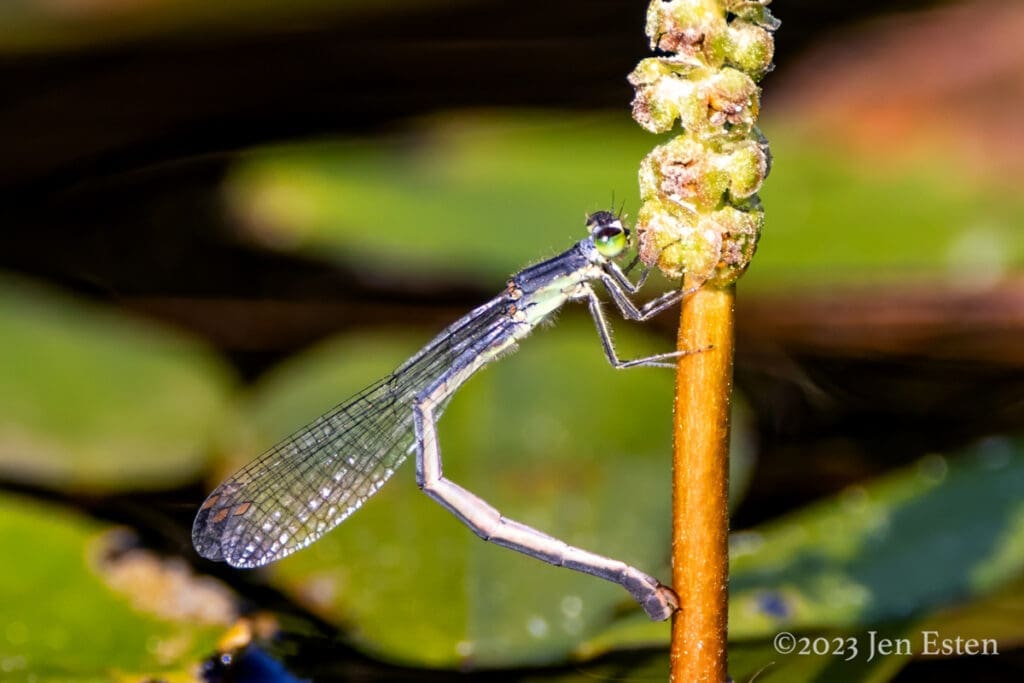
So how do Forktail males protect their fertilization success? Apparently they may not need to. It seems that females of this and other Forktail species probably mate only once or twice in their lives. That provides plenty of sperm to fertilize hundreds of eggs. One way in which they sometimes avoid being pestered by males is to catch and eat them! That may explain why males generally respond to the “no” signal by looking elsewhere for a mate.
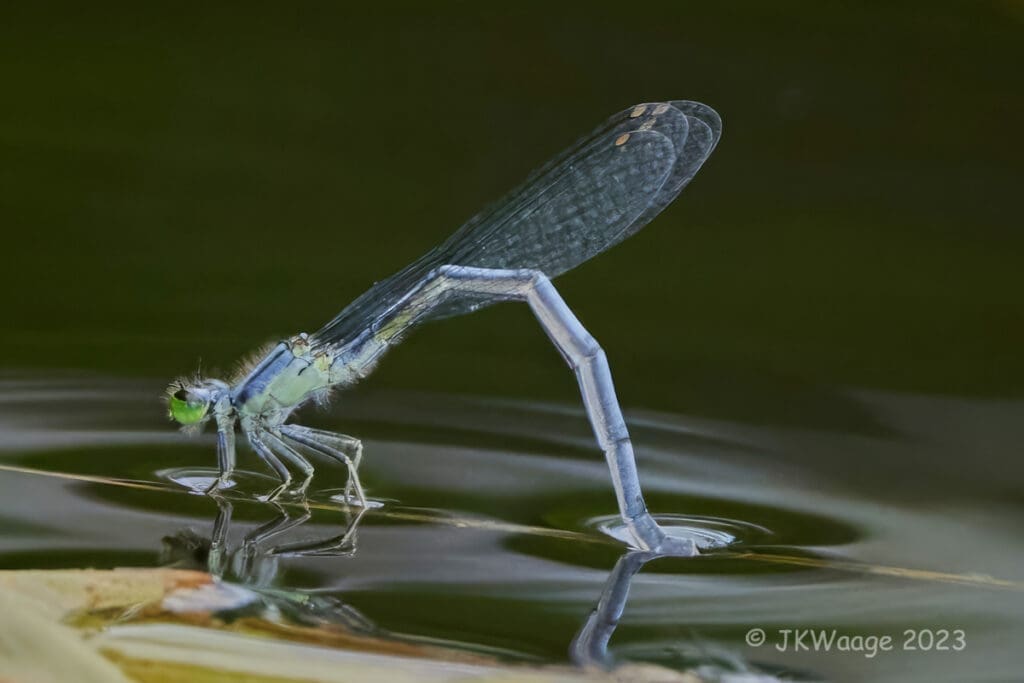
All of the species above are found around Pleasant Lake and local ponds. Let’s turn to a nearby brook and river species, the Ebony Jewelwing (below), for another example of male and female reproductive interactions. Jon did most of his research with this species and their Jewelwing relatives.
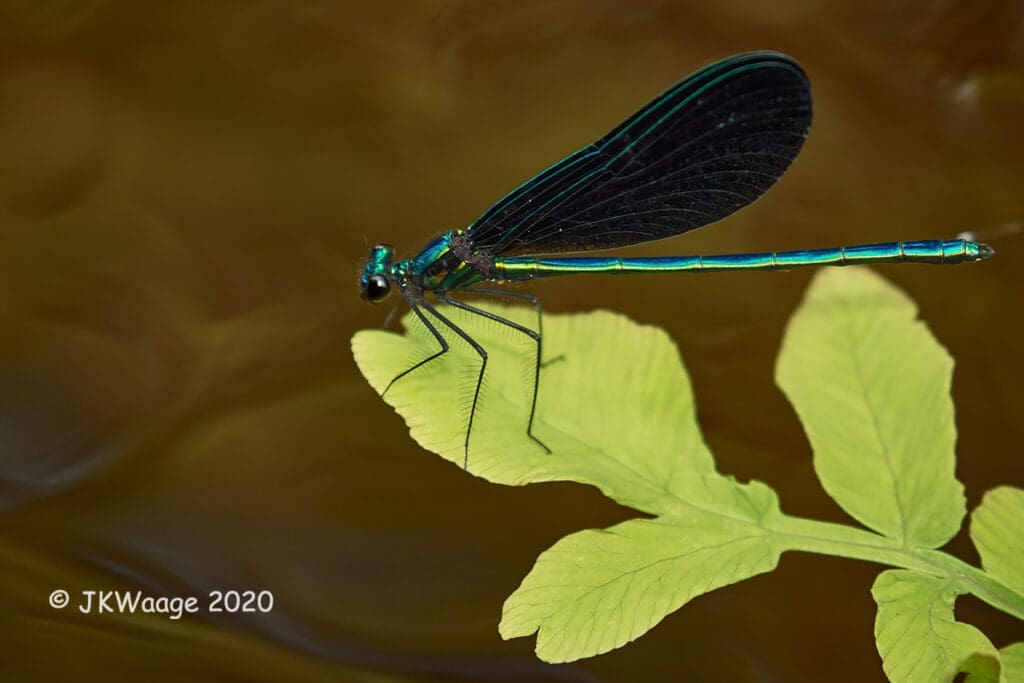
Jewelwings have the most complex behavior of any Damselfly or Dragonfly. They are highly territorial and defend patches of emergent vegetation used by females for egg laying. Their aerial battles over territories can go on for hours. When a female approaches, the male flies down to his defended patch, perches on a floating leaf and spreads his wings as if signaling “this is a great place to lay eggs”.

Rather than pounce, the male then begins a courtship flight in front of her with rapidly whirling wings. If the female flies to shore, he will follow and continue courting. If she stays still, he lands on her wings, repositions and forms the tandem and they mate.
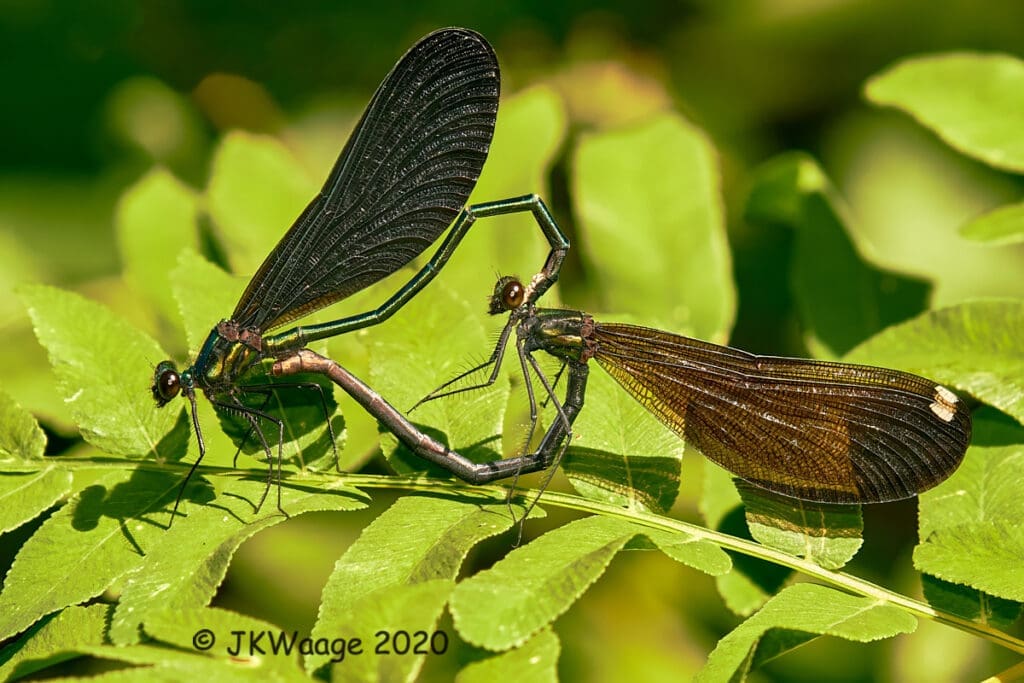
After mating the male returns to his territory. When she comes back, he displays again and guards her from other males as long as she lays her eggs (below). Guarded females lay many more eggs and in less time than those without a guard. Sometimes females who have not mated with a territorial male will sneak in to join other females laying eggs. She will use sperm of a previous male to fertilize her eggs. The guarding male risks losing both females if he tries to mate with the new one. These and other recent studies have revealed a much greater role of female behavior than was previously recognized.
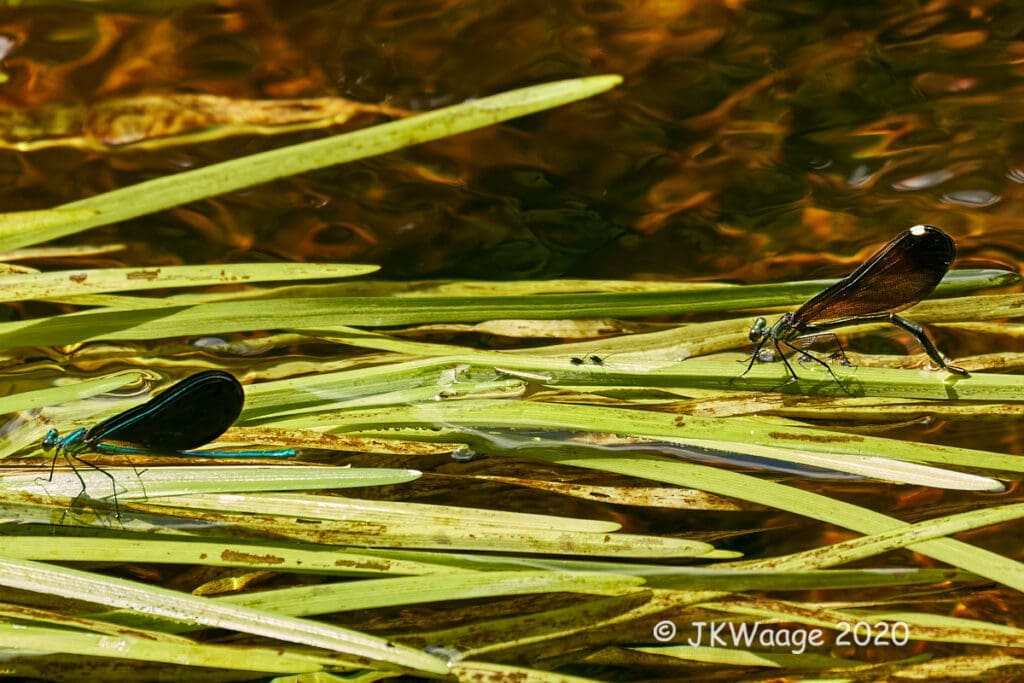
This has been a lot of detail about Damselflies, but we hope it helps reinforce one of the main messages of our newsletters. The closer you look, the more amazed and humbled you will be by the creatures we share this planet with. If we and our descendants are going to extend our current less-than-10 million year tenure here, we should value and learn from them all.
Bye for now… Jon and Jen
